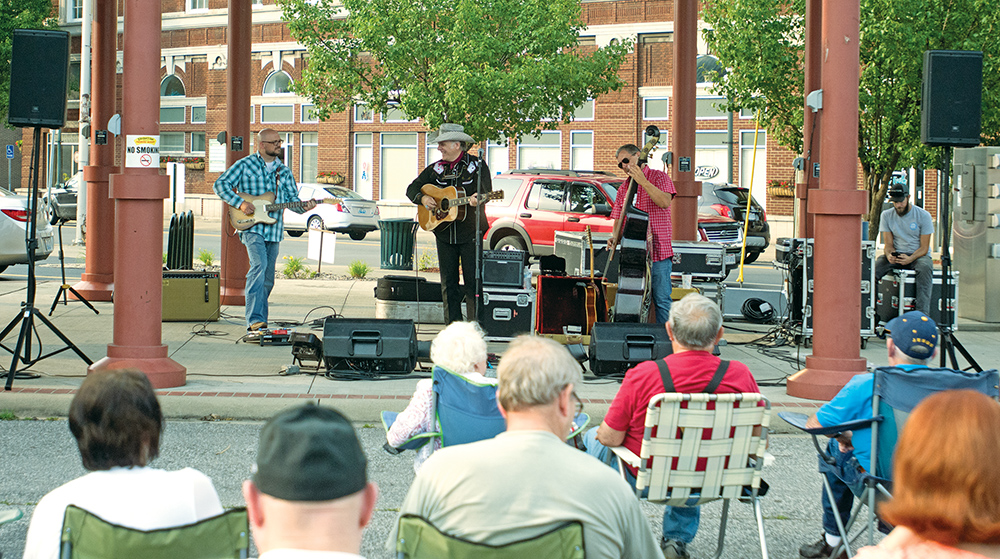Prosecutor offers alternatives to jail
Published 11:23 am Monday, January 30, 2017
Grant would fund program
While Judge Andrew Ballard still wants to see a drug court in Lawrence County, there is another program that would allow the courts to steer drug related offenders into treatment instead of jail cells, provided their offense isn’t directly drug related.
A $400,000 grant for the expansion of a diversion program, through the office of Prosecutor Brigham Anderson, could help the court send non-violent offenders into treatment rather than to jail. But only if their offense isn’t possession of or trafficking in drugs.
If, for instance, a person is picked up for shoplifting or finds themself in court for violating their community control sanctions, and has done so because of their addiction, this program seeks to find them treatment, to break the cycle, rather than putting them in the revolving door of the penal system.
“The Prosecutorial Diversion Program started in April of (2016),” Anderson explained. “We’re applying, initially, through DRC for grant dollars to expand that program to eventually help in the courts, drug court, as it starts. Now we don’t have a drug court yet, but as they start the program, we’re hoping to transition some of these low level, non-violent offenders into both the diversion program and the drug court.
“One of the issues with the diversion program,” Anderson continued, “is people who are charged with possession of heroin, possession of pills, possession of marijuana, possession of meth, are not eligible under the law to enter the diversion program.”
Those who are eligible, Anderson explained, are those charged with theft or other crimes.
“Almost everybody else,” he said, “but drug possession is not an eligible offense for the diversion program. The reason the legislature did it that way is so that there can still be a drug court. So they don’t compete with each other. So we’re going to start using these dollars, if we’re awarded the grant money, to start doing treatment in lieu of convictions, start these people on a treatment path even before the specialized drug court docket gets certified through the Supreme Court, and we’re hoping that the more of those we do, the quicker that Judge Ballard can get his (drug court) certified through the Ohio Supreme Court.”
There is also a cost saving element involved in keeping people out of overcrowded jails.
“The ultimate goal is to get these low level non-violent offenders off drugs,” Anderson said. “It serves a multitude of purposes, but one, if you send them to prison it typically makes them better criminals. It doesn’t treat their drug problem. So if we can treat their problem, get them off drugs, get them a job, get them a home, get them away from the crowd they were hanging with that got them into the situation, then they’re tax paying members of the community instead of just being a drain on it.”
It’s helping remove the stressors that lead to drug abuse, Anderson explained, rather than reinforcing them.
“There is also empirical evidence that you can find,” added Ballard, “that actually shows when you sentence these low level, non-violent felony drug offenders to prison, it worsens the condition. It doesn’t rehab these people. It doesn’t make them come out and be productive members of society. It actually makes them worse off than when they went in.”
Getting the drugs out of their system and detoxing in jail aren’t enough, Ballard explained, if the stressors that lead to drug use in the first place aren’t addressed, as they are in treatment programs. In fact, it can make things even worse.
“That is a big factor that increases overdose rates,” Ballard said. “Because you see people that have built up a tolerance to heroin… So they’re taking more heroin when they go to prison. They get out of prison, they remember the amount they took before they went in. So they went in, they detoxed, they clean out but they’ve gotten no therapeutic support. They come out and they look to score immediately, and they put a needle in their arm with the same amount of heroin the were ingesting before they went in… then they are unresponsive, the victim of an overdose because they put too much heroin in their system.”
Anderson explained that what treatment facilities offer that prison doesn’t is structure and direct treatment of the problem.
“In prison you get three hots and a cot,” he said.
However the diversion programs offer structure in a regimented system, job training, and mental health treatment to address these underlying issues of abuse.
“Substance abuse often has underlying issues,” Anderson said. “You have to change the way these people think, the way that they live, and the way that they generally operate in day to day life.
So that is the difference. If you send them to prison they aren’t getting any of that. If they are in this intensive, therapeutic setting, then they are getting that structure that they don’t otherwise have.”





